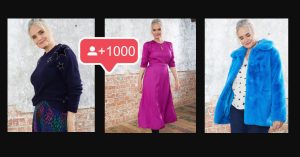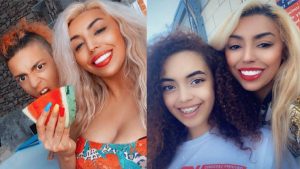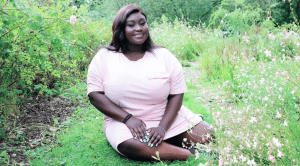Here’s what to remember in the early stages, before you even start planning
Fancy yourself something of an entrepreneur outside of the content space? Plenty of creators and creatives have leveraged their social and online following to as a built-in audience and network for when the time to launch their own brand comes. Glossier started out in the comments section of Into The Gloss, former Glamour beauty director Alessandra Steinherr has a smash-hit skincare range for Primark, and Milk Makeup was born out of Milk Studios, the super-hip downtown NYC studios – and that’s not to mention the endless creators like Huda Kattan and Kylie Jenner who sit atop veritable beauty empires.
If that sounds like your dream, the path ahead of you won’t be easy but if you’re agile, flexible and determined in your attitude you could be the next big beauty brand. Let’s dig into the basics…
Prime your audience
As your audience grows, you should be able to observe with greater clarity what they do and don’t like. Maybe skincare routines kind of bomb, but in-depth make-up tutorials always smash it for you. Either way, pay attention to the kind of content that resonates with your following, and think about how you can leverage that to get more hype around your launch. For example, if you’re hoping to start with a cosmetics line, make sure that your audience see you as an authority on cosmetics. Don’t only post gushing reviews of products – make your content thoughtful and balanced and show your followers that you have a unique and considered point of view. Talk about texture, shades, pigment payoff and consistency for example – this will show people that you’re an authority on the subject, and indicate to them when you launch your own products that you’ve thought about every point of the user experience.
Be selective with your partnerships
If your goal is one day to be a beauty boss of your own making, you’ll need to be extra-careful with the brands you work with now. That’s not to say you shouldn’t do brand partnerships – you absolutely should, providing they feel like a good fit, as they can help boost your profile and authority. But you should be selective and only partner with brands you not only really love, but you feel have similar ethos to your would-be like. If you work with anyone who comes knocking, teaming up with drugstore make-up lines one day, and then a really high-end skincare brand the next day, that doesn’t convey a strong point of view or identity to your audience. That’s not to say you must stick to one price point when it comes to partnerships – instead, it’s about choosing to work with brands who share a common goal with you, whether that’s sustainability, rule-book-breaking colour and creativity or even old Hollywood glamour.
Keep your eyes on the competition
Beauty brands and collaborations pop up all the time, so take the time to look into as many of them as possible, even if you don’t feel you share much common ground with the creator. You’ll be able to gain valuable insights from their successes and missteps alike: for example, did people say that they loved the products but didn’t like the superfluous amounts of packaging that came with it? Make a note to streamline yours. Did they struggle with logistics and ship orders late? Maybe people loved that they listed the full ingredients list online, or got a third party agency to conduct consumer trials.
Valuable lessons to be learned from every launch
No matter how big the initial investment you can always learn from the mistakes and triumphs of your peers. Glossier’s first product was the Priming Moisturiser, which was formulated based on the comments on the Into The Gloss website. Readers listed their dream moisturiser qualities and on a shoestring budget, lots of customer research, it because a huge success. On the other hand, Estee Lauder launched an entirely new brand, The Estee Edit, in 2016 with Kendall Jenner as the face and a millennial-friendly focus. After less than a year, they had to close it down despite the huge ad budget and mega-star face: it hadn’t landed with shoppers and the product offering was confused.







